Water conservation is essential in addressing water scarcity issues, and adopting creative strategies can significantly reduce water consumption. Here are some strategies, including using ice packs instead of regular ice, that can help conserve water:
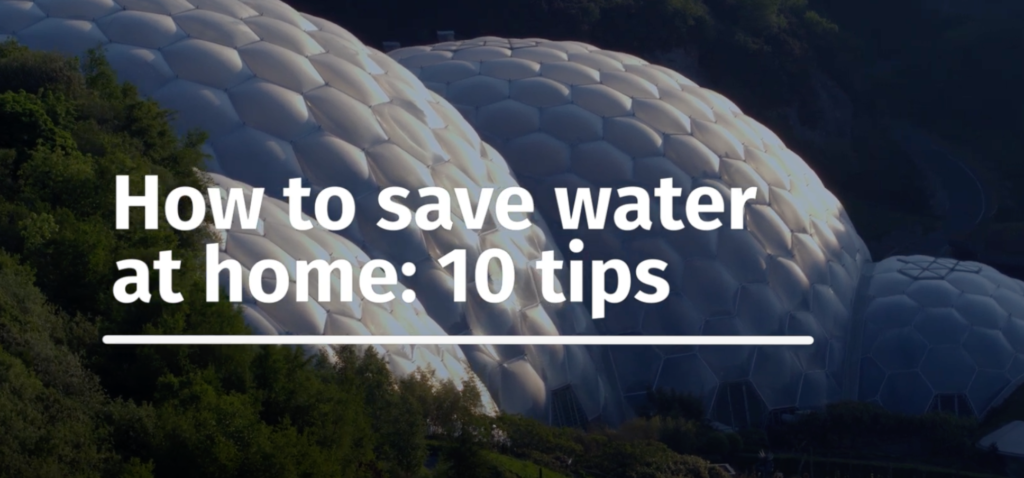
1. Use Ice Packs Instead of Regular Ice
Regular ice is often made from tap water, which is typically wasted once it melts. By using ice packs (such as gel ice packs or reusable ones), you can avoid the need to use potable water for ice. Ice packs can be reused multiple times, preventing the need to continuously produce new ice from water. Ice packs used in conjunction with the top rated coolers on sale will prolong the life of the ice pack, thus increasing energy efficiency.
Benefits:
- Reduces water wastage from ice melting.
- Ice packs are reusable and can be used multiple times, unlike disposable ice cubes.
- Cuts down on the energy needed to freeze water in large quantities.
2. Fix Leaks and Drips
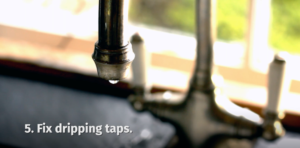 Leaking faucets, toilets, and pipes waste an enormous amount of water. Regularly checking for leaks and repairing them promptly can save thousands of gallons of water annually.
Leaking faucets, toilets, and pipes waste an enormous amount of water. Regularly checking for leaks and repairing them promptly can save thousands of gallons of water annually.
Tip: Install water-saving devices like low-flow faucets or showerheads to help prevent water wastage from everyday use.
3. Install Low-Flow Fixtures
Using low-flow toilets, showerheads, and faucets is one of the most effective ways to conserve water in the home. These devices are designed to use less water while still providing adequate performance.
Benefit: Reduces water consumption without sacrificing comfort or functionality.
4. Use a Dishwasher or Washing Machine Only When Full
Dishwashers and washing machines are designed to wash full loads of dishes or laundry. Running these appliances with smaller loads wastes both water and energy. Always wait until you have a full load before running them.
Tip: If your dishwasher or washing machine has an eco-mode or water-efficient settings, use them to further reduce water usage.
5. Rainwater Harvesting
Collecting and storing rainwater is an excellent way to reduce your reliance on municipal water sources, especially for outdoor watering needs like gardening, lawn care, or even washing cars.
Benefit: Reduces the amount of potable water used for non-drinking purposes.
6. Drought-Resistant Landscaping (Xeriscaping)
Choose plants that require minimal water once established, such as succulents, cacti, and native plants. Xeriscaping involves designing your landscape in a way that minimizes the need for irrigation, especially in areas with limited rainfall.
Tip: Group plants with similar water needs together, and use mulch to reduce water evaporation.
7. Water-Efficient Irrigation
If you need to water your garden, use water-efficient systems like drip irrigation or soaker hoses. These systems deliver water directly to the roots, reducing evaporation and runoff.
Tip: Water your plants in the early morning or late evening to minimize evaporation during the hottest part of the day.
8. Take Shorter Showers
Reducing the length of showers is a simple but effective way to save water. Consider using a timer or installing a water-efficient showerhead that reduces the flow rate while still providing a satisfying shower experience.
Tip: Aim for 5-minute showers to reduce water usage without sacrificing cleanliness.
9. Use a Broom, Not a Hose
When cleaning driveways, sidewalks, or patios, use a broom instead of a hose to avoid unnecessary water wastage.
Benefit: No water is needed for this task, and it’s just as effective.
10. Turn Off the Tap
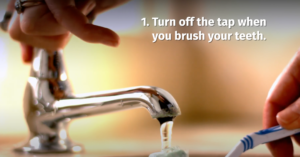 Many people leave the water running while brushing their teeth, washing dishes, or shaving. Simply turning off the tap while you’re not using water can save gallons over time.
Many people leave the water running while brushing their teeth, washing dishes, or shaving. Simply turning off the tap while you’re not using water can save gallons over time.
Tip: Teach kids and others in your household the importance of turning off the tap when not actively using water.
11. Use a Pool Cover
If you have a pool, using a pool cover when it’s not in use helps reduce evaporation, which can be a major cause of water loss from swimming pools.
Benefit: Helps retain water in the pool, reducing the need for frequent refilling.
12. Reuse Greywater
Greywater refers to water that comes from sinks, showers, bathtubs, or washing machines. If treated and filtered properly, greywater can be reused for non-potable purposes like irrigation or flushing toilets.
Tip: Check local regulations before installing a greywater system, as there are specific codes and standards for using greywater safely.
13. Use a Bucket to Wash Your Car
Instead of washing your car with a hose, use a bucket to wash it, which can save a significant amount of water. Also, consider using a car wash that recycles water.
Benefit: Reduces the amount of water used in each car wash.
14. Choose Water-Efficient Appliances
When buying new appliances, look for those labeled with WaterSense (for faucets and showerheads) or Energy Star ratings, which are designed to be more water- and energy-efficient.
Tip: Look for clothes washers with a “load sensing” feature that adjusts the water used based on the size of the load.
15. Avoid Overwatering Plants
Overwatering is a common mistake that wastes both water and can harm plants. Use a moisture meter to check the soil’s moisture level before watering to ensure that plants get only what they need.
16. Compost Instead of Using a Garbage Disposal
Using a garbage disposal sends food waste down the drain and typically requires running water to flush it. Composting instead reduces water waste and is better for the environment.
17. Use a Watering Schedule for Plants
Water your plants on a schedule based on weather and soil conditions rather than just when it seems necessary. This reduces excess watering.
Incorporating these strategies into your daily routine can help you reduce water usage while still maintaining a comfortable and functional living environment. Simple adjustments like using ice packs, repairing leaks, and switching to water-efficient appliances can make a big difference in preserving this valuable resource.
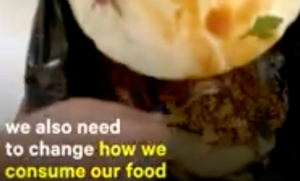 What we eat has a significant impact on conservation, as our food choices influence ecosystems, biodiversity, and the overall health of the planet. The production of food, particularly through industrial agriculture, can lead to deforestation, habitat destruction, and soil degradation, all of which threaten wildlife and disrupt natural cycles. For example, large-scale livestock farming is a major contributor to greenhouse gas emissions, while also driving the conversion of forests into grazing land or cropland, leading to the loss of crucial habitats for countless species. Similarly, the demand for crops like palm oil and soy often results in the destruction of rainforests, which are vital for carbon sequestration and biodiversity.
What we eat has a significant impact on conservation, as our food choices influence ecosystems, biodiversity, and the overall health of the planet. The production of food, particularly through industrial agriculture, can lead to deforestation, habitat destruction, and soil degradation, all of which threaten wildlife and disrupt natural cycles. For example, large-scale livestock farming is a major contributor to greenhouse gas emissions, while also driving the conversion of forests into grazing land or cropland, leading to the loss of crucial habitats for countless species. Similarly, the demand for crops like palm oil and soy often results in the destruction of rainforests, which are vital for carbon sequestration and biodiversity.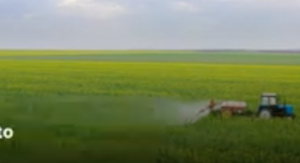 Conversely, making more sustainable food choices—such as reducing meat consumption, choosing locally grown or organic produce, and supporting regenerative farming practices—can help reduce these negative impacts. Making the right choices can start young. Picking the right
Conversely, making more sustainable food choices—such as reducing meat consumption, choosing locally grown or organic produce, and supporting regenerative farming practices—can help reduce these negative impacts. Making the right choices can start young. Picking the right  When you look around you, what do you see? Chances are good, you do not see an area of land that is untouched by human hands in some ways. At one time, we lived in a land that was untouched. Animals had more room to roam, grass and trees were abundant, and there were fewer homes, buildings, and concrete. The air was fresher, no one had to think about the water supply, and there were always plenty of hunting opportunities for those who lived off the land. Times have changed and the resources that were once a part of our world have dwindled in most areas. Therefore, conservation efforts were put into action and it is something that we should all respect and take part in whenever it is possible for us to help the world we live in.
When you look around you, what do you see? Chances are good, you do not see an area of land that is untouched by human hands in some ways. At one time, we lived in a land that was untouched. Animals had more room to roam, grass and trees were abundant, and there were fewer homes, buildings, and concrete. The air was fresher, no one had to think about the water supply, and there were always plenty of hunting opportunities for those who lived off the land. Times have changed and the resources that were once a part of our world have dwindled in most areas. Therefore, conservation efforts were put into action and it is something that we should all respect and take part in whenever it is possible for us to help the world we live in.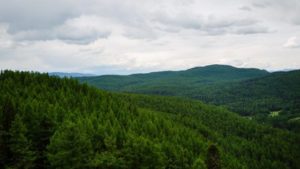 For a moment, think about the stories you may have heard growing up about a wild animal that roamed freely. Untamed by humans and living off the lands that it called home. It may have been an exotic animal or a horse running free through a field. Thanks to humans, those animals are fewer now than they used to be. Humans captured and tamed the horses to help them and many animals killed as our food needs increased. At times, we have animals that came into our area to protect our homes and businesses after taking it from them and pushed them into other areas.
For a moment, think about the stories you may have heard growing up about a wild animal that roamed freely. Untamed by humans and living off the lands that it called home. It may have been an exotic animal or a horse running free through a field. Thanks to humans, those animals are fewer now than they used to be. Humans captured and tamed the horses to help them and many animals killed as our food needs increased. At times, we have animals that came into our area to protect our homes and businesses after taking it from them and pushed them into other areas.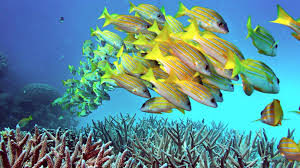 If our government agencies did not take part in the attempt to preserve certain areas for the animals and natural habitats, we would attempt to fill those areas as well. Eventually, we would have a situation where more animals would end up near extinction because they were run out of their homes to make room for ours. More of our worlds natural resources would be used up. Fewer trees would mean more pollution and less fresh air for us to breathe. If there weren’t specific times or limits for when we could hunt certain types of animals, the animals we seek would become extinct. This includes both land animals and fish.
If our government agencies did not take part in the attempt to preserve certain areas for the animals and natural habitats, we would attempt to fill those areas as well. Eventually, we would have a situation where more animals would end up near extinction because they were run out of their homes to make room for ours. More of our worlds natural resources would be used up. Fewer trees would mean more pollution and less fresh air for us to breathe. If there weren’t specific times or limits for when we could hunt certain types of animals, the animals we seek would become extinct. This includes both land animals and fish.